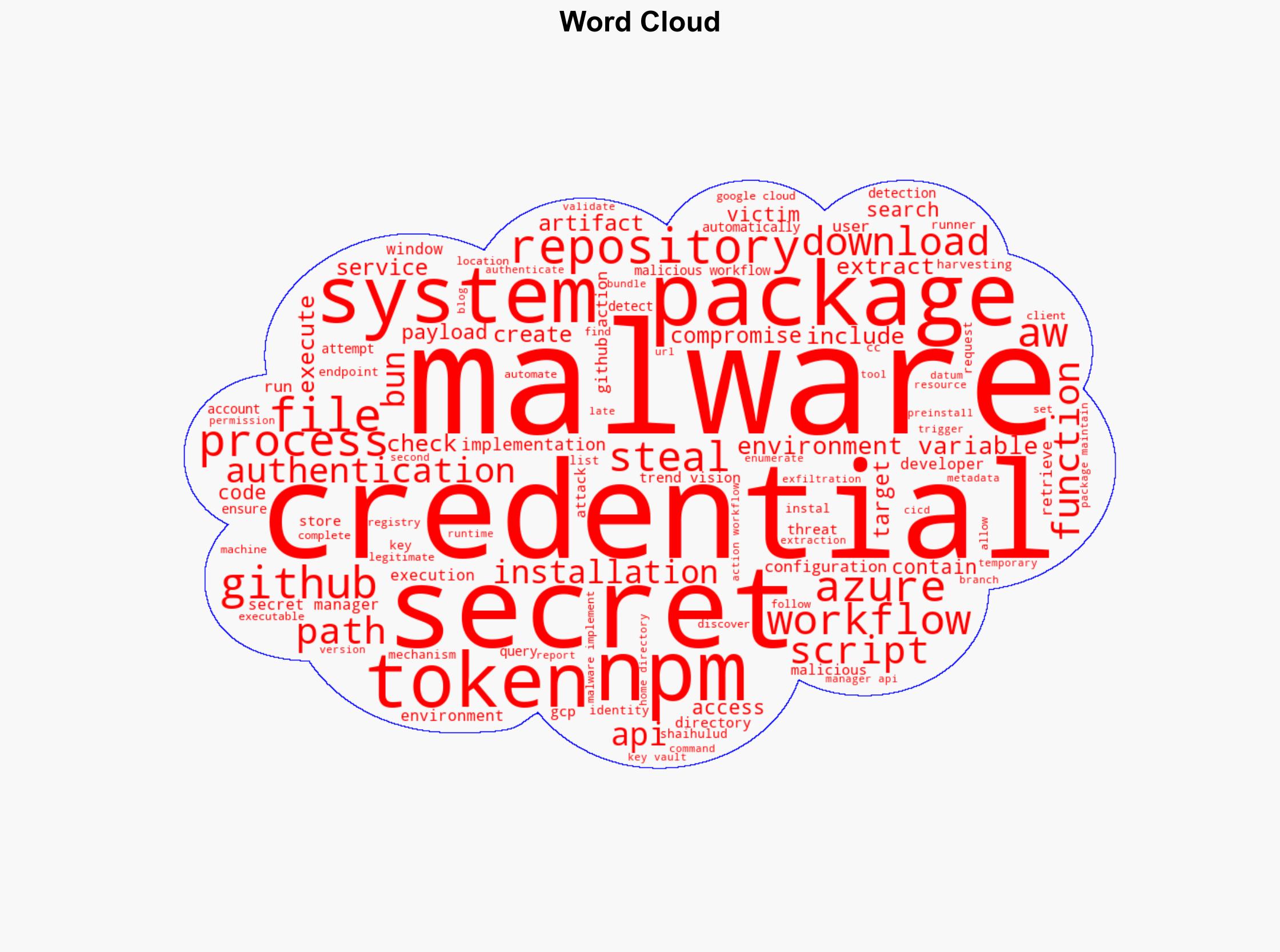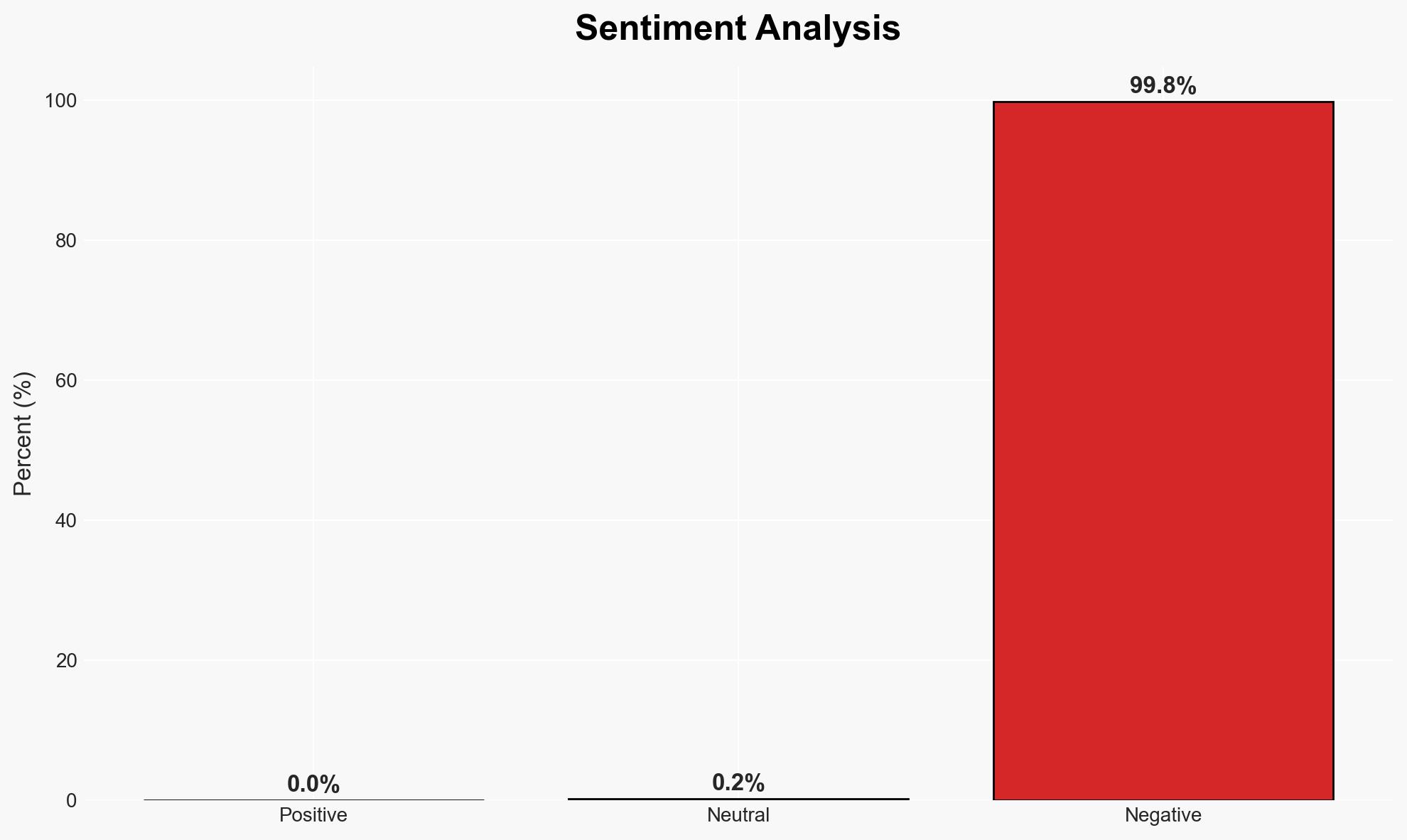Shai-hulud 20 Campaign Exploits Cloud Ecosystems to Steal Credentials and Automate Supply Chain Attacks
Published on: 2025-11-27
AI-powered OSINT brief from verified open sources. Automated NLP signal extraction with human verification. See our Methodology and Why WorldWideWatchers.
Intelligence Report: Shai-hulud 20 Campaign Targets Cloud and Developer Ecosystems
1. BLUF (Bottom Line Up Front)
The Shai-hulud 20 campaign represents a sophisticated cyber threat targeting cloud and developer ecosystems, particularly through npm package compromises. The campaign’s ability to automate supply chain attacks and steal credentials from major cloud platforms poses a significant risk to thousands of downstream users. The most likely hypothesis is that this campaign is primarily financially motivated, with moderate confidence in this assessment.
2. Competing Hypotheses
- Hypothesis A: The Shai-hulud 20 campaign is financially motivated, aiming to steal credentials and manipulate network traffic for monetary gain. Supporting evidence includes the theft of cryptocurrency and cloud service tokens. However, the exact financial mechanisms and beneficiaries remain unclear.
- Hypothesis B: The campaign is state-sponsored, intended to disrupt cloud services and gather intelligence. This is supported by the campaign’s sophistication and potential for widespread disruption, though there is no direct evidence linking it to a state actor.
- Assessment: Hypothesis A is currently better supported due to the direct financial benefits observed, such as cryptocurrency theft. Indicators that could shift this judgment include evidence of state actor involvement or strategic geopolitical impacts.
3. Key Assumptions and Red Flags
- Assumptions: The campaign primarily targets financial assets; the attackers have the capability to maintain and evolve sophisticated malware; cloud service providers are primary targets.
- Information Gaps: The identity of the attackers; the full scope of compromised accounts; detailed financial impact analysis.
- Bias & Deception Risks: Potential confirmation bias towards financial motives; source bias from cybersecurity firms with vested interests; possible deception in the campaign’s complexity to mask simpler objectives.
4. Implications and Strategic Risks
This development could lead to increased scrutiny of software supply chains and heightened security measures across cloud platforms. The campaign’s evolution could impact global cybersecurity norms and practices.
- Political / Geopolitical: Potential for increased tensions if state actor involvement is confirmed, leading to diplomatic disputes.
- Security / Counter-Terrorism: Heightened alert for similar supply chain attacks; potential for copycat operations.
- Cyber / Information Space: Increased focus on securing cloud services and developer ecosystems; potential for widespread adoption of enhanced security protocols.
- Economic / Social: Possible economic impacts on affected companies; erosion of trust in digital supply chains.
5. Recommendations and Outlook
- Immediate Actions (0–30 days): Enhance monitoring of npm repositories; conduct threat hunting for indicators of compromise; collaborate with cloud service providers for rapid response.
- Medium-Term Posture (1–12 months): Develop resilience measures for software supply chains; strengthen partnerships with cybersecurity firms and cloud providers; invest in capability development for threat detection.
- Scenario Outlook:
- Best Case: Effective mitigation and no further significant incidents.
- Worst Case: Widespread disruption and financial loss, with potential geopolitical ramifications.
- Most Likely: Continued attempts at similar attacks with incremental improvements in security posture.
6. Key Individuals and Entities
- Not clearly identifiable from open sources in this snippet.
7. Thematic Tags
Structured Analytic Techniques Applied
- Adversarial Threat Simulation: Model and simulate actions of cyber adversaries to anticipate vulnerabilities and improve resilience.
- Indicators Development: Detect and monitor behavioral or technical anomalies across systems for early threat detection.
- Bayesian Scenario Modeling: Quantify uncertainty and predict cyberattack pathways using probabilistic inference.
- Network Influence Mapping: Map influence relationships to assess actor impact.
Explore more:
Cybersecurity Briefs ·
Daily Summary ·
Support us





